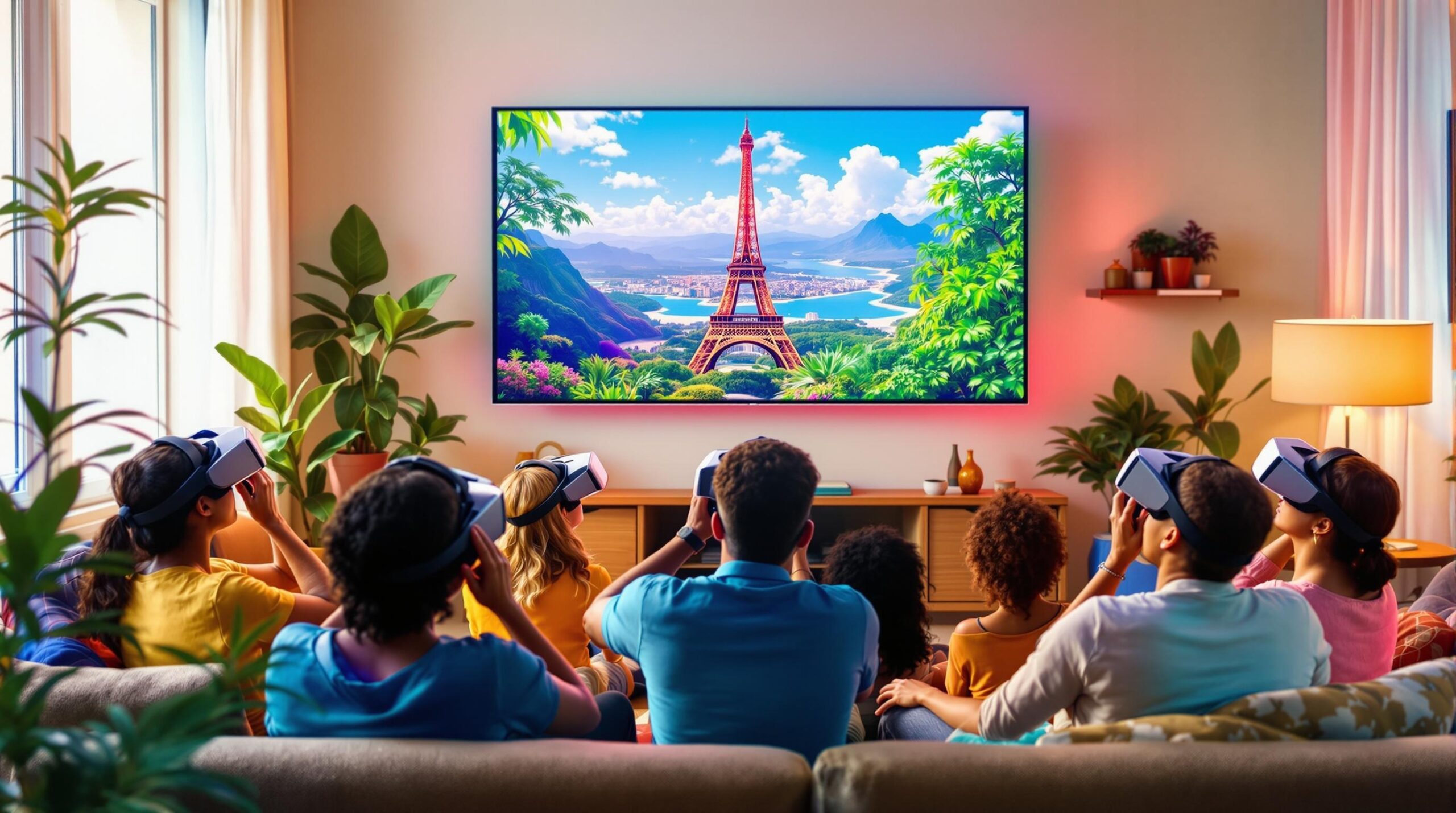The Evolution of Virtual Reality Technology
Virtual reality technology has advanced rapidly over the last decade. What was once a clunky, expensive setup is now sleek and affordable. Early VR systems required large computers and clumsy headsets. However, today’s devices are much lighter and more comfortable. They are also surprisingly inexpensive, with robust capabilities accessible at lower prices. Today, VR headsets like the Meta Quest 3 and HTC Vive Pro 2 offer high-quality, immersive experiences. This evolution marks a crucial turning point in technology and its applications.
The technological leap allows developers to create realistic, detailed worlds. Software advancements enable seamless integration of sights, sounds, and tactile sensations. These virtual environments mimic the physical world with staggering accuracy. As a result, users engage with these environments more authentically. This realism propels VR from a simple entertainment tool to a meaningful exploration medium. Ultimately, the rise of VR technology sets the stage for virtual travel.
The Rise of Virtual Tourism
Virtual tourism emerged as a practical solution when global travel halted. With borders closed, many found solace in virtual explorations. VR platforms offer interactive tours of cities, historical sites, and natural wonders. Companies designed innovative programs to meet the rising demand for virtual travel experiences. Major travel companies and startups alike invested in VR platforms. They worked diligently to create immersive tours that rival traditional travel experiences. In 2025, these tours will deliver enriching experiences without the physical journey.
Travelers can explore diverse locations from their living rooms. The possibilities seem endless, from the vast expanses of the Grand Canyon to the bustling streets of Tokyo. Museums, nature trails, historical monuments—all are accessible through VR. This accessibility makes travel possible for those with physical or financial constraints. Virtual tourism’s popularity opens a world of exploration previously limited by geography or cost.
Environmental and Economic Impacts of Virtual Travel
Virtual travel offers significant environmental benefits. Traditional travel often leaves a considerable carbon footprint. Air travel alone contributes a substantial portion of global greenhouse gas emissions. Virtual tourism reduces this ecological impact. By opting for VR experiences, individuals can significantly minimize their carbon footprint. This shift aligns with growing global sustainability efforts.
Additionally, virtual travel positively impacts local economies in unexpected ways. It creates opportunities for regions that may not receive many tourists physically. These places attract potential future visitors and remote admirers by showcasing their culture through VR. Monetization of virtual experiences helps support local artisans and businesses. Such economic opportunities through VR contribute to sustainable growth in underrepresented regions.
Virtual Reality’s Role in Cultural Preservation
One of VR’s profound impacts is its role in cultural preservation. Virtual reality allows cultures to share their heritage in detail. Users can experience festivals, rituals, and everyday life authentically and respectfully. This immersive exposure helps to foster a greater understanding and appreciation of diverse cultures. Consequently, VR serves as a bridge across cultural divides.
Furthermore, virtual reality aids in preserving endangered cultural practices and languages. Developers archive these practices within virtual environments for future generations. This dynamic digital preservation extends the lifespan of traditions under threat from modernization. Therefore, virtual travel expands our worldview and conserves cultural heritage for posterity.
Challenges and Criticisms of Virtual Travel
Despite its benefits, virtual travel faces several challenges. Critics argue that it cannot replicate the sensory richness of physical travel. Authentic experiences involve more than just sights and sounds; they engage all the senses. Virtual environments often fall short of delivering the same level of multisensory engagement. This limitation makes VR experiences feel less authentic to some.
Moreover, there is a concern about technology accessibility. Although VR headsets are more affordable, they remain out of reach for many. High-speed internet, essential for seamless VR experiences, is not universally available. Consequently, access disparities may widen the gap between those who can or cannot experience virtual travel.
Privacy concerns also loom large in the virtual space. As users interact with VR environments, they yield sensitive personal information. This data includes location, preferences, and even biometric details. Ensuring the safety of this information remains a primary concern for VR technology providers. These challenges need addressing to enhance VR’s potential further.
Innovations and Future Possibilities
Addressing these challenges paves the way for future innovations. Developers are working on improving sensory integration in VR. Haptic feedback and scent delivery systems promise richer, more engaging experiences. These advancements could redefine virtual travel, making it more immersive.
Moreover, tech companies strive to make VR more accessible. Initiatives aim to provide affordable devices and internet access to underserved communities. These efforts will democratize VR, amplifying its reach and impact.
Future possibilities extend beyond individual experiences. VR could transform educational curricula, enabling virtual field trips to global destinations. Imagine students exploring the Amazon rainforest or ancient Rome from their classrooms. Such integration would deepen learning and global awareness.
The Social Impact of Virtual Travel Communities
Virtual travel creates and connects global communities. Enthusiasts gather on platforms to share experiences and insights about virtual destinations. These communities foster interaction and exchange among diverse global citizens. Such engagement promotes a broader understanding of international cultures and issues.
Social media platforms enhance these interactions. Users document their virtual journeys, sharing stories and experiences with others. This sharing promotes VR travel and builds a supportive community around it. Thus, virtual travel is more than an individual pursuit; it’s a collective adventure connecting people worldwide.
Virtual Reality Travel’s Role in Future Tourism Trends
Looking ahead, VR will play a critical role in future tourism trends. Traditional tourism institutions recognize the potential of virtual reality. Many are already incorporating VR components into their offerings. Hotels provide virtual room tours, enticing prospective visitors before booking. Tourist boards offer VR experiences of their locales to attract future guests.
These integrations indicate a shift toward a hybrid model of tourism. As VR becomes more prevalent, traditional and virtual travel will coexist, complementing and enhancing personal experiences. Virtual reality travel will not replace traditional travel but enrich it, offering alternative experiences and preparation.
Conclusion
The rise of virtual reality travels signifies a profound shift in how we explore the world. In 2025, VR will offer innovative solutions that address several pressing global challenges. It expands access to travel, enhances cultural understanding, and promotes sustainable practices. Despite its limitations, VR’s potential to enrich our global perspective is immense. As technology advances, its role in redefining travel will continue to grow, inviting us to explore the world from a new vantage point.


